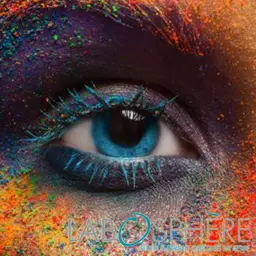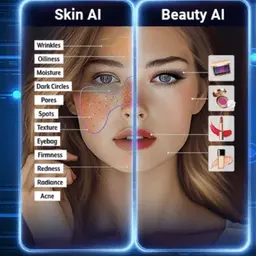
One of those sad, grey days of January, the pride of the cosmetics industry gathered in Paris to discuss a highly topical issue. Kindly invited by the organizers, I humbly got involved in the debates to try and clarify a few questions I had on this theme. After a brilliant introduction to put it into perspective, the subject was defined: human microbiome, Copernicus revolution.
After a few definition issues to try and determine what we were talking about, the first speaker presented the market situation, classifying the products according to several themes:
• Probiotics, prebiotics, and symbiotics, making ferments and products derived from these biotechnologies a separate class
• Substances modifying the initial function of the skin flora, like those that allegedly consist in activating actives with the bacteria found on the surface of the skin
• All products designed to protect or restore the skin’s ecosystem
Then, a formulator evoked several issues related to formulation practices and the microbiome. Meaningfully, it was specified the mycobiome (fungus) and virome (virus) should not be overlooked when dealing with these issues. This smart, interesting point was made regarding the choice of the preservative systems, which could be selected according to their modes of action, some of them being more protective than others of the skin flora.
To try and understand the technologies behind these issues, two eminent specialists made an update on the techniques used as part of these approaches. We should bear in mind that what is new here is not really the bacteria, but rather the techniques to study them. Quite intelligently, they remarked that they are not ubiquitous, but tricky to use, and in particular rather complex to interpret. Both insisted on the fact that the cosmetics industry has only just started taking interest in these issues. Several of the notions dealt with helped me understand them a little better, like the importance of bio-informatics, the notion of taxon, and a few other specialties in the same vein.
The morning ended with a round table gathering several high-profile ingredient manufacturers. All of them told us they had started exploiting this for a long time, and several actives were actually contained in their ranges, which allegedly make it possible to start tackling this issue in a relevant manner. I have been around in this industry for quite some time now, so I must admit I remained a bit cautious. As a strong believer in this issue for many years, I already attended congresses on probiotics in the early 2000s, when the cosmetics industry was conspicuous by its absence!!! Well, it is never too late to do the right thing. Besides, some of the actives showcased have more to do with seizing an opportunity and deadweight. In certain cases, it is more about recycling already existing products than new specialties. As a matter of fact, discussions were launched about whether there might be an interest in testing generic and basic ingredients to assess their impact on the microbiome, rather than develop new actives as usual. Business is business… this question was welcomed with a cautious silence!
The packaging aspect was also debated, in relation to two technologies: the application of the UHT and Pyclear technologies, which help develop packaging which, although not sterilizing, protects products against recontamination in the conditions of use.
After a few comments on a meeting on preservative-free formulations a few years ago, we went on with the case studies. The first was quite typical, as it concerned a brand recently introduced on the market by someone who directly embodies the concept: the project initiator himself suffered from intestinal disorders and had to take drugs that raised his awareness of these issues. This project targets cosmetics in relation to the theme of good bacteria. One of its slogans is: ‘You are made up of 50% of bacteria, take care of them for your own good!’ The products are aimed to associate probiotics, but not living organisms, prebiotics, and ‘postbiotics’. The latter is a neologism which actually refers to products derived from fermentation: here, lactic acid. The second case study presented concerned a particular bacterium, for which the hypothesis made on the basis of very serious work is that it has disappeared from the human skin microbiome. This bacterium transforms ammonia into nitric oxide: as a result, it is believed to have an action on the skin inflammatory mechanisms. Recolonizing the skin with this bacterium is thought to improve clinical signs. Research work on this theme strongly suggests a loss of biodiversity associated with inflammatory situations. A somewhat peculiar product range was introduced on this theme in the USA.
At the round table scheduled to conclude the day, the discussion dealt with regulatory issues. The question is of course whether cosmetics based on living bacteria would still be cosmetics. Participants had mixed feelings about this – they actually showed quite negative. The regulations specialist present emphasized the fact that it would be a bad idea to provoke a reaction from health authorities with exaggerated claims. The somewhat peculiar field of the use of non-listed preservatives was also discussed with a precise, unequivocal warning. Of course, the trend which would consist in using undefined fermentation juices seems contrary to what has been the European regulatory spirit for several decades. To end with a positive note, during the discussions, it was also shown that the use in Asia of fermented products is a long-time tradition, and their use keeps quickly developing, in particular for aged individuals. If Asia is a trendsetter, it would actually be relevant to consider it.
At the end of that very interesting day, the question behind the theme ‘Human microbiome, Copernicus revolution’ remained open. I think it is much too early to be certain it is a disruptive innovation which will lead to the definition of new standards, except if, as a few participants suggested, the microbiome could be considered as an organ. Any modification could then result in the products at stake no longer falling under the scope of cosmetics regulations. So, we should remain cautious as regards the adoption of new concepts. With this in mind, another question remains open: is that disruptive innovation or ‘sciencexploitation’, this concept which describes situations where science is overexploited for communication purposes? Too early to tell. I am not trying to be sceptical: whistleblowers may be right. But this question is important, as it may be one of the most delicate and complicated the industry has had to deal with over the past decades. Unfortunately, there is a risk that this new concept might quickly be pre-empted by the operators of this branch to make products for commercial purposes.
Let us give ourselves some time to consider this with a little distance, in order to avoid either forgetting about this concept too fast, which would be a shame, or creating, once again, a situation which would make abnormality become normality. Maybe there should be an ‘?’ to the initial question.
Jean Claude Le Joliff













